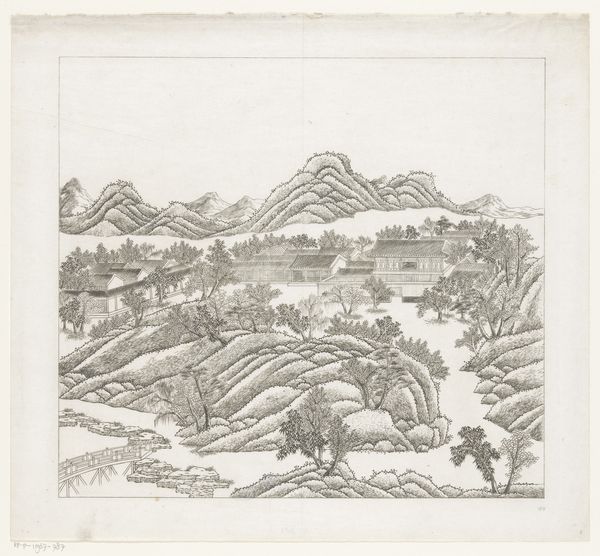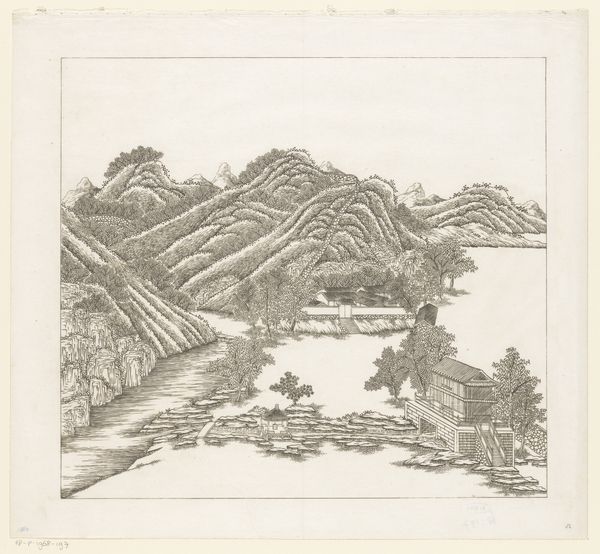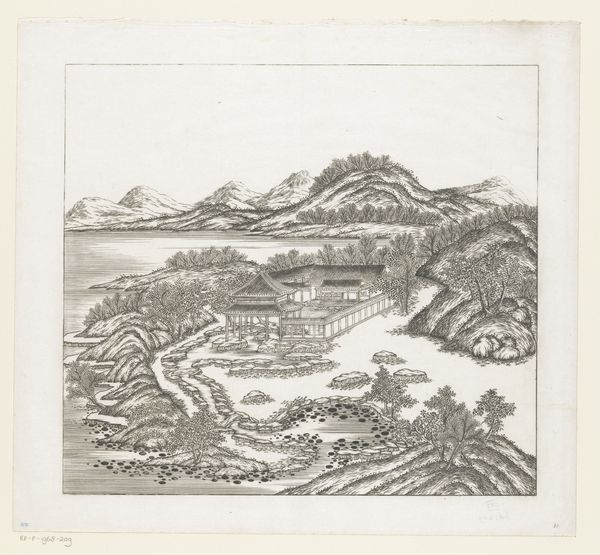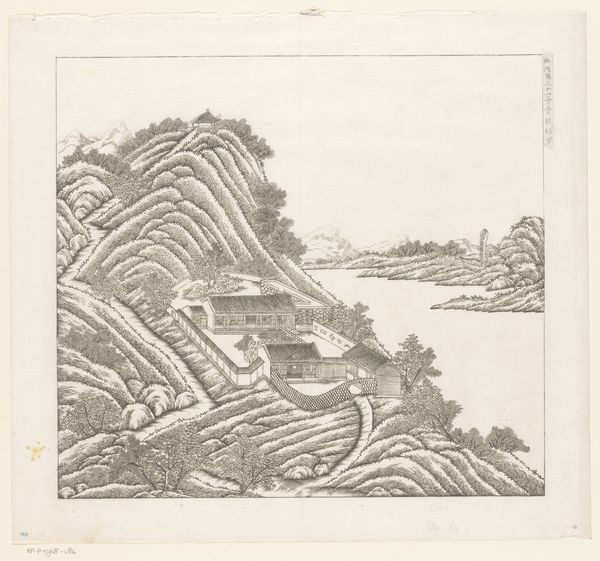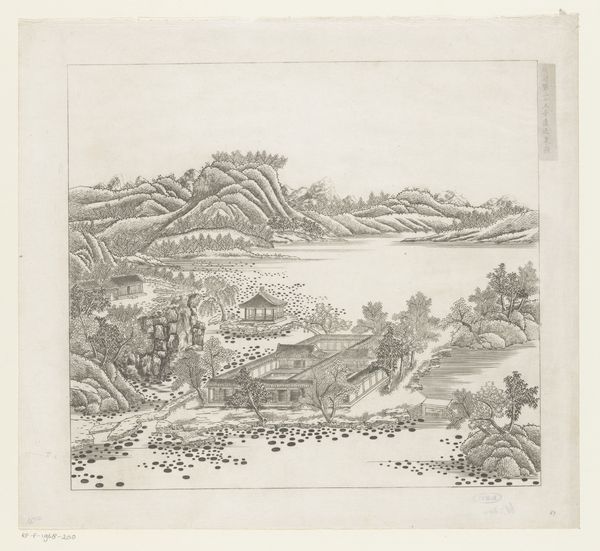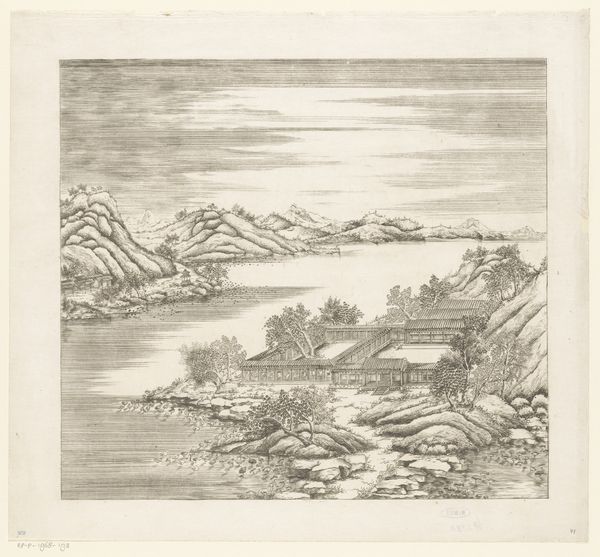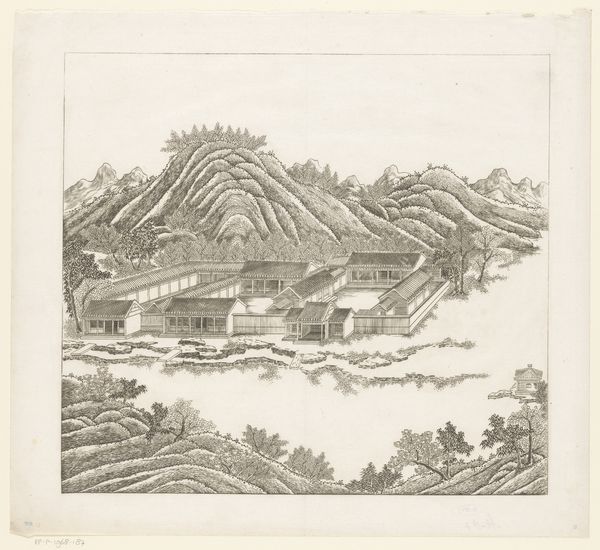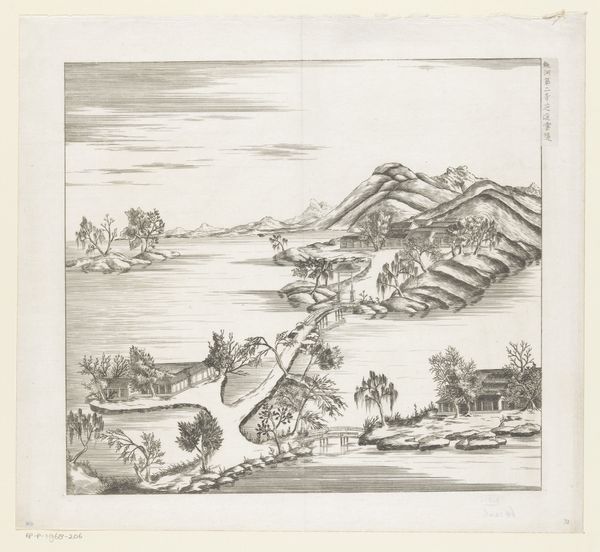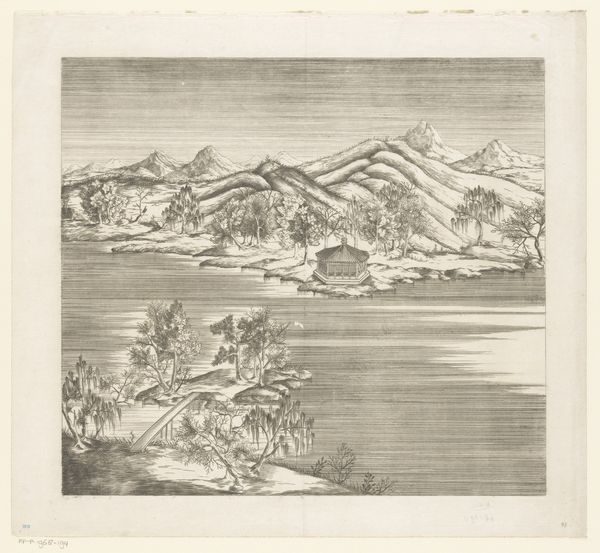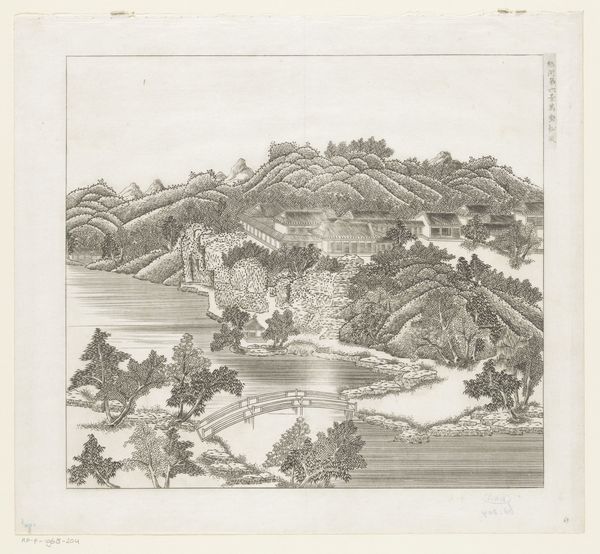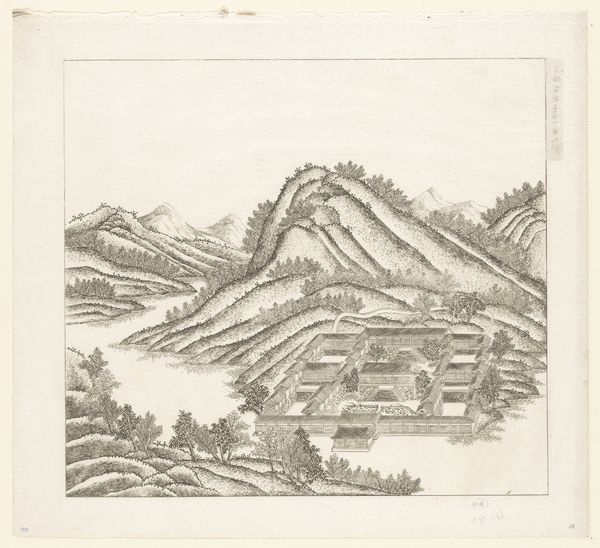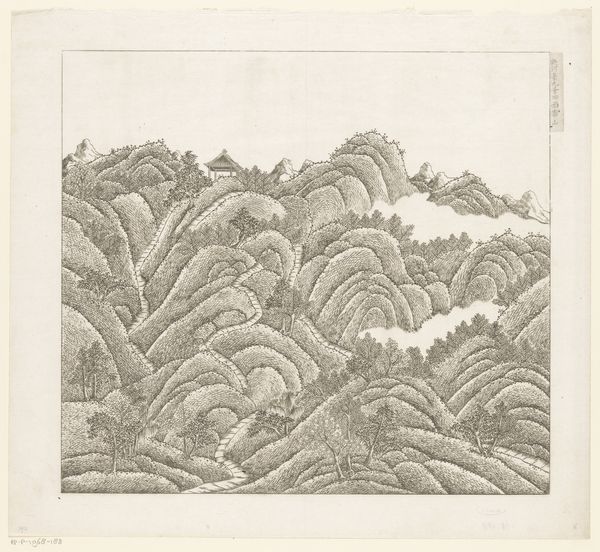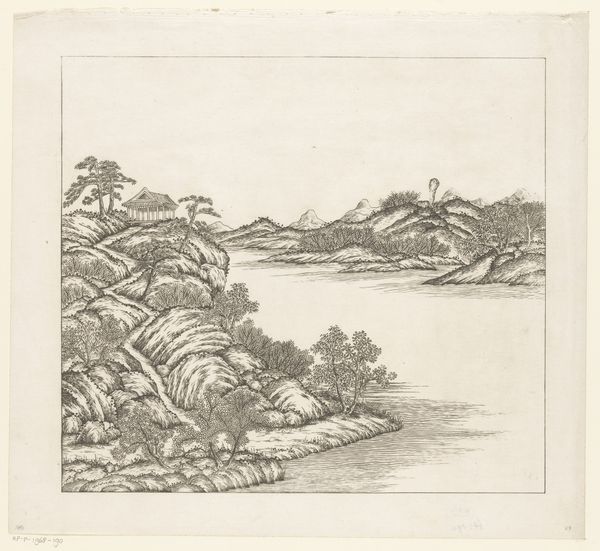
Gezicht op een deel van het keizerlijk zomerpaleis in Chengde (Jehol) te China 1712 - 1714
0:00
0:00
drawing, print, ink
#
drawing
# print
#
asian-art
#
landscape
#
ink
#
geometric
#
line
#
cityscape
Dimensions: height 324 mm, width 357 mm
Copyright: Rijks Museum: Open Domain
Editor: This ink drawing from the early 18th century, titled "View of part of the Imperial Summer Palace in Chengde (Jehol) in China" by Matteo Ripa, strikes me with its meticulous detail. How do you interpret the social and material significance of a work like this? Curator: It's fascinating when viewed through a materialist lens. Look closely at the medium: ink on paper, readily available materials but deployed with immense skill and time. Consider the artist, Ripa, an Italian missionary. His labor here translates into knowledge production and cultural exchange within a complex geopolitical context. Who commissioned this piece, and how did it function within the power structures of the Qing dynasty and European trade? Editor: So, it’s not just a landscape, but evidence of complex exchange? The paper itself would have been quite a commodity. Curator: Exactly. The work speaks to a very specific set of material conditions and power dynamics. Think about the production of the ink, the sourcing of the paper, the very act of representation. These elements expose the flow of resources, knowledge, and influence between Europe and China. It invites questions like: who had access to these materials and the leisure to contemplate this scene? Whose story is being told and, perhaps more importantly, whose is being omitted? Editor: I see. Viewing it this way highlights how even a seemingly serene landscape painting embodies complex histories of labor and material exchange. Curator: Precisely. Understanding art this way moves us away from simply admiring aesthetics and encourages us to investigate the tangible realities behind artistic creation and consumption. Editor: It's certainly given me a new perspective on the work. Thanks! Curator: My pleasure. It's all about critically examining the means of production.
Comments
No comments
Be the first to comment and join the conversation on the ultimate creative platform.
